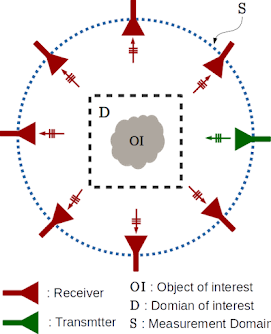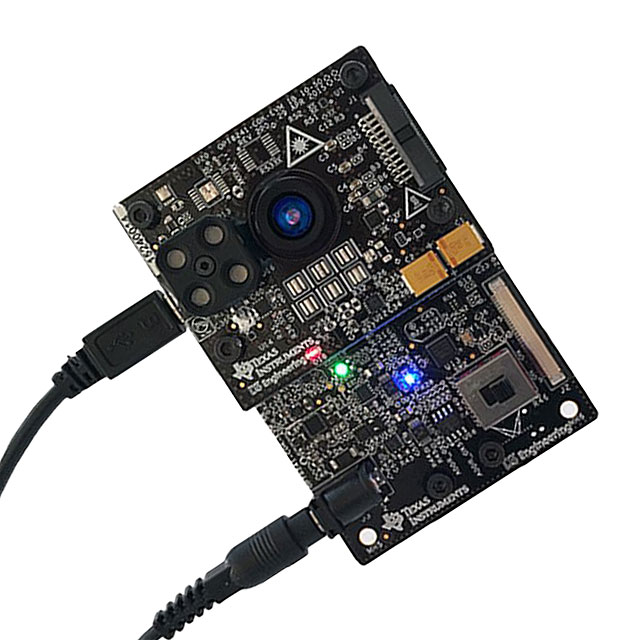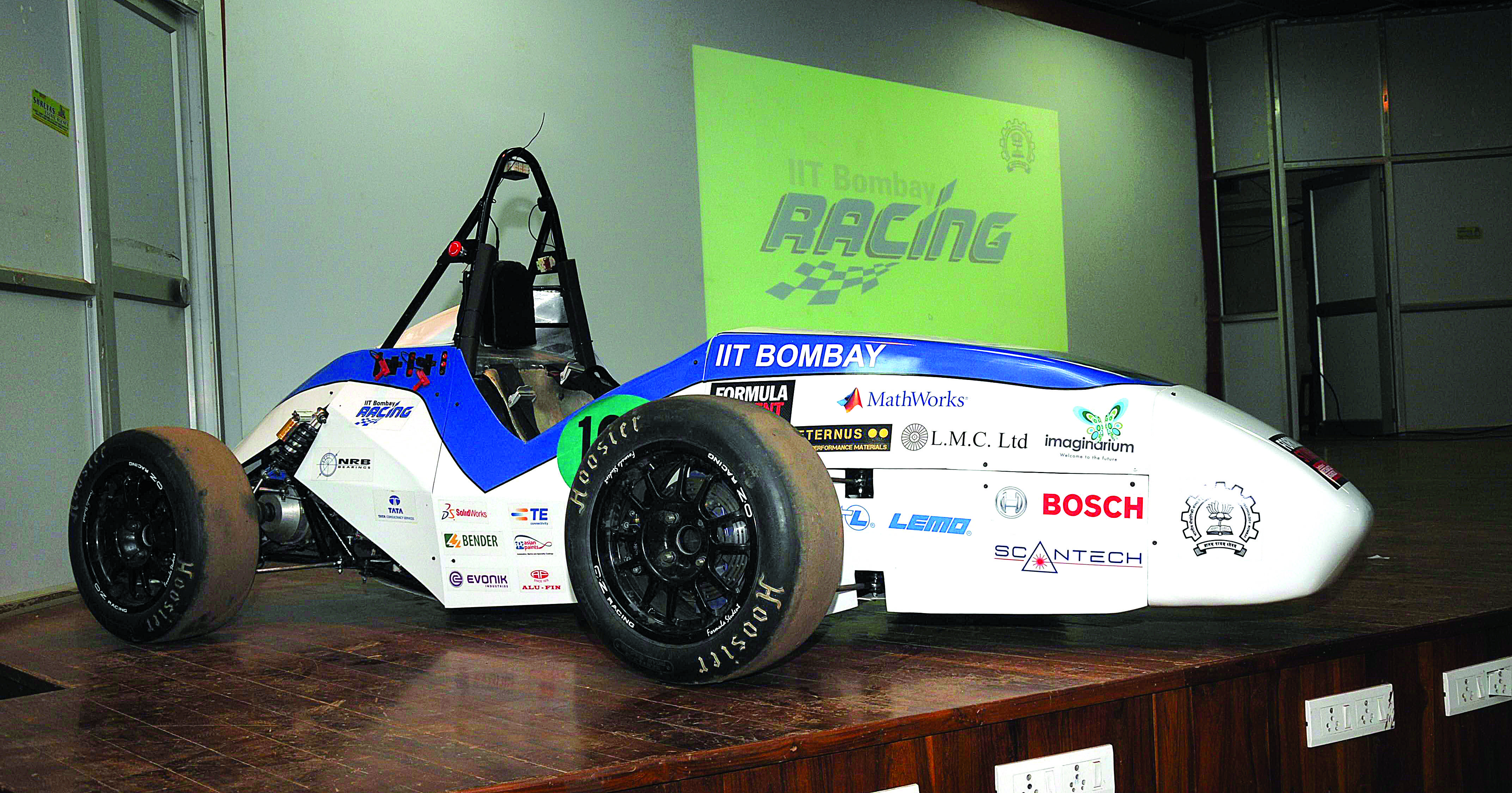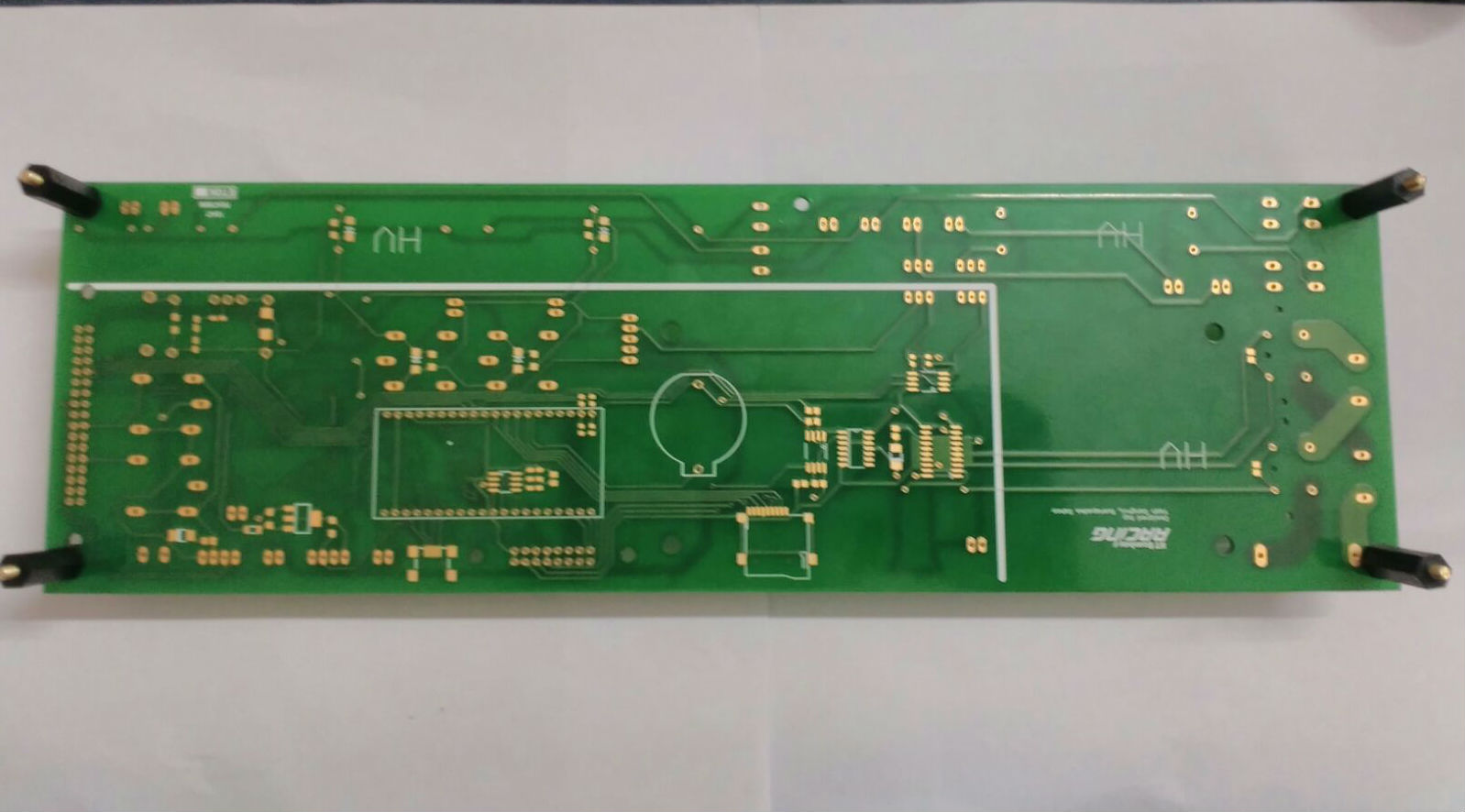Inverse Scattering

Inverse Scattering: Measurement Setup
Cancerous tissues show different electrical properties such as permittivity, and conductivity compared to healthy tissues. To obtain the dielectric properties as a function of space, we impinge an electromagnetic field on the object of interest and measure the scattered fields at different positions. Inverse scattering problem is the estimation of the permittivity from scattered and incident fields as input.
Inverse Scattering is a non-linear, highly ill-posed inverse problem and hence one might need ideas from image processing, compressed sensing, machine learning etc. to better solve the problem. My master's thesis, titled Wavelets in Inverse Scattering, under the guidance of Prof. Vikram Gadre explored the use of wavelet-based sparsity techniques to mitigate the ill-posedness of the problem.
Currently, I am working on a deep-learning based framework form imaging strong scatterers. Through deep learing, we aim to mitigate the issue of converging to false minima - an issue which is observed in existing iterative strategies like SOM/CSI due to the global non-linear effects which become more pronounced as strength of the scatterer increases.
ToF Camera Team at Texas Instruments | Internship

OPT8241: ToF sensor with 320X240 pixel resolution
I interned with the Time of Flight (ToF) camera team at Texas Instruments, Bangalore from May to June 2016. A Time-of-flight (ToF) camera works by illuminating the scene with a modulated light source, and observing the difference in phase with received signal to compute depth of objects in the scene.
For the first half of my internship, I worked on a metrology system which extracted the dimensions of objects present in the scene, provided the ToF camera images. The system was developed using classical computer vision techniques with a slight modification to the Harris Corner detection to adapt it for depth images.
The second half was dedicated to building calibration procedures for the low resolution ToF cameras (80X60) which estimated camera parameters (focal length, optical center) and corrected the offset in phase images simultaneously.
Design Engineer | IIT Bombay Racing

Orca: IIT-B's electric vehicle entry to Formula Student, UK 2016

PCB for interfacing motor controllers and battery (without soldered components). Designed by yours truly!
IIT Bombay Racing is a multidisciplinary team of more than 30 students from 5 departments, which participates in the annual Formula Student competition at Silverstone, U.K. As of 2017, it is India's only electric vehicle entry in the competition. I was a part of the team as Design Engineer in the Battery management subsytem. To read more about Orca, our 2017 entry, click here.
As a design engineer, I was responsible for design and assembly of the high voltage battery. Specifically, I worked on the researching and choosing the appropriate lithium ion cells, designing the battery configuration to match the requirements of the electric motor and developing the auxiliary management system which monitored the individual cell voltages and temperatures.
Additionally, I was also tasked with fabricating the PCB interfacing the battery, management system and the motors which included various smaller components such as pre-charge discharge circuits and energy monitoring.
Real Time Beat Tracking Challenge
Real time beat tracker implemented on Raspberry Pi. Demonstrated on 'Like a Stone' by AudioSlave.
My teammates: Mehul Shah, Arunabh Ghosh, and I, built a real-time beat tracker as a part of the IEEE Signal Processing Cup 2017 under the guidance of Prof. Rajbabu. The problem statement required the teams to build a real-time beat tracker and implement it on an embedded device such as Raspberry Pi with a creative output (such as flickering lights). The performance of the beat tracker was judged using its performance on the test data-set crowd-sourced from the participating teams and creativity of the application.
Here, is a demonstration of our beat tracker on the song "Like a Stone" by AudioSlave. The algorithm in the tracker is coded in Python with extensive use of Numpy to vectorize the code and decrease the computational time as much as possible. The output for the beat tracker is in the form of LED lights alternating at every measure. The tracker achieved an accuracy of 55.13% on the test dataset